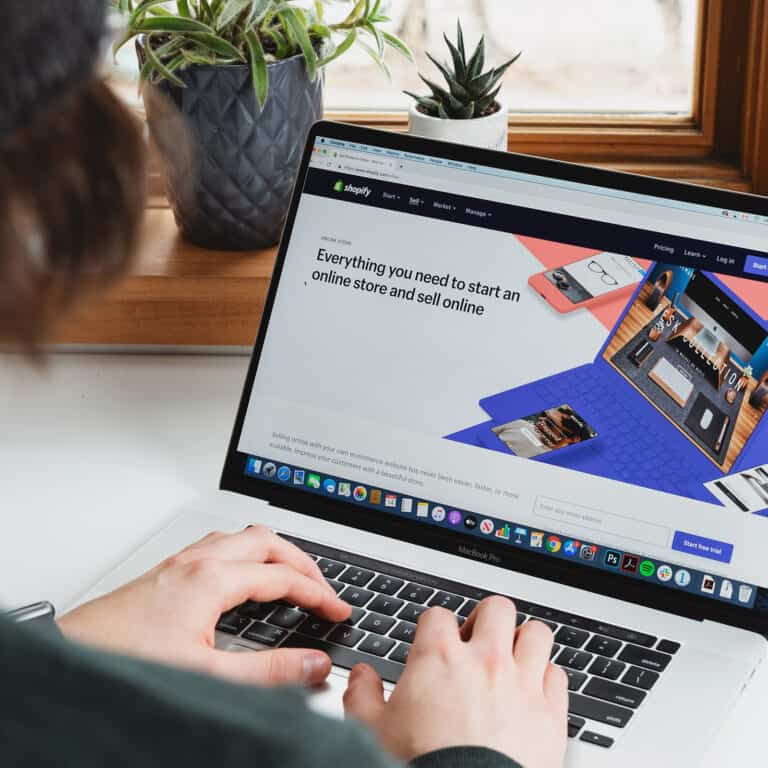7 Reasons Why I Hate the Amazon Associates Program
At least once a week, an Amazon box arrives at our doorstep. While I love using Amazon as a consumer, I despise its affiliate program.
Amazon is huge. More than 95 million Americans currently have Prime accounts. And Amazon is the third most popular search engine after Google and YouTube.
If you’ve done any affiliate marketing, you’ve probably used Amazon Associates at some level. It was one of the first — if not the first — affiliate programs.
There are many things I like about Amazon. However, its affiliate program is not one of them.
That’s blasphemy! You say.
In his great affiliate marketing report, Brandon Gaille looks at how much money bloggers make from Amazon.
It turns out that affiliate bloggers who make around $2-4K per month make most of their revenue from Amazon Associates. While this isn’t bad for a side hustle, it’s not sustainable for a full-time business.
On the other hand, Gaille’s study reveals that higher-end affiliate marketing bloggers make less than 25% of their revenue from Amazon.
Just to give you an idea, I made less than 2% of my revenue from Amazon affiliate links with my previous business.
I consider Amazon Associates the affiliate program of last resort. There are much better options for most blog niches. You should at least test the other available programs.
In this article, I’ll review why I hate the Amazon affiliate program:
- 1. You Can’t Cloak Links
- 2. No Conversion Attribution
- 3. 24-Hour Cookie Window
- 4. Amazon Can Suspend Your Account at Anytime
- 5. No Links in Emails
- 6. You Can’t Funnel Your Audience to One Product
- 7. Low Commission Rates
- Summary
1. You Can’t Cloak Links
I use link cloaking for all affiliate links. I do this even for merchants with whom I don’t currently have a relationship.
The reasons why I like link cloaking:
- Cleaner Links – Links that are cloaked look nicer than affiliate links that typically are long, have parameters attached to them, and look just plain messy.
- Easier to Share – Your links follow a set naming convention that’s easy to remember.
- Link Management – You can manage all links from one place. If you need to change a merchant link, all references will be updated automatically.
- Tracking and Reporting – Not only can you measure clicks to a merchant, but it’s also possible to measure the number of conversions. This isn’t possible with a direct link.
Amazon’s stance on link cloaking is somewhat confusing. Many users interpret Amazon’s compliance rules to forbid link cloaking.
However, other services such as Geniuslink state you can use link cloaking with Amazon.
To be on the safe side, it’s best not to cloak your Amazon links but to use a raw affiliate link that connects directly.
I’m not exactly sure why Amazon would disallow link cloaking. A likely reason would be that Amazon wants to know that the referral came from your website.
Not cloaking your links makes it much harder to manage your Amazon affiliate links. If you change a link, you must then change it wherever you reference it on your website.
You also can’t do some advanced affiliate marketing techniques, such as A/B testing on different landing pages or affiliate programs to see which converts better.
With today’s technology, it’s possible to track outbound clicks to Amazon. Google Analytics can do this, but it’s not as reliable as an HTTP redirection.
2. No Conversion Attribution
I’m someone who likes to measure everything, so this is my biggest pet peeve with Amazon’s affiliate program:
You can’t track conversions accurately!
I like to know the source of my conversions, especially if I’m doing paid traffic. Amazon has no way to match conversions to specific visitors. It lacks what’s known in the industry as a postback or API.
However, you can segment your earnings by using what Amazon calls tracking IDs.
On your Amazon Associates profile page, select “Manage Your Tracking IDs” from the top-right menu. You can then use a different tracking ID for each section on your site. Amazon allows you to set up to 100 of these IDs per account.
Unfortunately, there’s no way to find out from Amazon which specific pages on your site yielded the greatest number of conversions. Yes, you can track clicks per web page, but that doesn’t necessarily equate to the number of conversions.
A workaround for any paid traffic would be to create a different webpage only for paid traffic that would copy your existing organic SEO webpage.
3. 24-Hour Cookie Window
Not everyone buys a product at the first click. Depending on the product, it can take days, weeks, or even months before the prospect completes a purchase.
Affiliate programs use web browser cookies to track sale conversions. The cookie window attributes the sale to the affiliate if it occurs within a specified timeframe.
Typically, affiliate programs allow a 30-day window from the time of the first click to the purchase.
Not Amazon. Its Associates program gives you only 24 hours with its cookie.
That means you’ll get credit only if the prospect buys within 24 hours of clicking your link.
On the positive side, Amazon does credit you for all purchases made after the prospect clicks on the link. So if you’re promoting the latest Xbox, and your reader clicks the Amazon link, purchases the console, and then buys other items at the same time, you get credit for all of it!
Amazon makes it really easy to buy other products, so this can really add up. This can add up substantially since Amazon makes it so easy to buy other products. For low-priced items, you can use Amazon’s affiliate program to increase your revenue per click.
4. Amazon Can Suspend Your Account at Anytime
Amazon will sometimes suspend accounts without giving a prior warning.
You should never rely too much on any one merchant for affiliate marketing. However, affiliates report account suspension as being a bigger issue than usual with Amazon. They also report that it’s difficult to resolve the problem and get reinstated.
If you use Amazon Associates in any capacity, make sure you have a Plan B for the products you promote. You might want to set up affiliate accounts with competing online stores such as Walmart, BestBuy, and eBay.
Although you should test these alternatives anyway, at least you’ll know that, if your Amazon account were to be suspended, you have a backup.
5. No Links in Emails
This is from Amazon’s legal contract (my emphasis is highlighted in yellow):
Promotional Limitations
Amazon Associates Program Operating Agreement
You will not engage in any promotional, marketing, or other advertising activities on behalf of us or our affiliates, or in connection with an Amazon Site or the Associates Program, that are not expressly permitted under the Agreement. You will not engage in any promotional, marketing, or other advertising activities in any offline manner, including by using any of our or our affiliates’ trademarks or logos (including any Amazon Mark), any Program Content, or any Special Link in connection with email, offline promotion or in any offline manner (e.g., in any printed material, ebook, mailing, or attachment to email, or other document, or any oral solicitation).
This means you can’t use an Amazon link in any email you send. This stinks if you send out emails with a list of, say, recommended books.
Technically, according to the contract, you can’t even refer your email subscribers to a webpage on your own site that contains Amazon links. Now, this would be somewhat hard for Amazon to prove. So at the very least, I’d say don’t create a private webpage with no other navigation options or refer to it only by mentions from an email source.
(Note: If you’re set up with the Amazon Influencer Program, you can include links in your emails, but they can lead only to your Influencer Page on Amazon.)
6. You Can’t Funnel Your Audience to One Product
This can be either a good or a bad thing.
On the one hand, when you direct your visitors to Amazon, they’ll tend to order not only the item you recommended but also other items as well. As an Amazon Associate, you’ll get credit for all of these purchases. This is especially important if you’re selling a low-ticket item because upsells can add more affiliate revenue for you.
On the other hand, people visiting Amazon can get lost and may not even buy the product you recommend.
In fact, they may buy a competing product!
If you’re selling a high-ticket item (over $500), you should send your readers to a landing page that has that product and only that product. If you can establish a direct relationship with the merchant, you can test both methods to see which converts better.
7. Low Commission Rates
Lastly, quite frankly, Amazon’s commission rates suck.
Amazon Affiliate Commission Rates
| Product Category | Commission |
|---|---|
| Amazon Games | 20.0% |
| Luxury Beauty, Luxury Stores Beauty, Amazon Explore | 10.0% |
| Shoes, Handbags & Accessories | 4.0% |
| Office Products | 4.0% |
| Kitchen | 4.5% |
| Home Improvement | 3.0% |
| Beauty | 3.0% |
| Business & Industrial Supplies | 3.0% |
| Digital Music, Physical Music, Handmade, Digital Videos | 5.0% |
| Physical Books, Automotive | 4.5% |
| Amazon Fire Tablet Devices, Amazon Kindle Devices, Amazon Fashion Women’s, Men’s & Kids Private Label, Luxury Stores Fashion, Apparel, Amazon Cloud Cam Devices, Fire TV Edition Smart TVs, Amazon Fire TV Devices, Amazon Echo Devices, Ring Devices, Watches, Jewelry, Luggage | 4.0% |
| Toys, Furniture, Lawn & Garden, Pets Products, Headphones, Musical Instruments, Outdoors, Tools, Sports, Baby Products, Amazon Coins | 3.0% |
| PC, PC Components, DVD & Blu-Ray | 2.5% |
| Health & Personal Care | 1.0% |
| Televisions, Digital Video Games | 2.0% |
| Amazon Fresh, Physical Video Games & Video Game Consoles, Grocery | 1.0% |
| Gift Cards; Wireless Service Plans; Alcoholic Beverages, Digital Kindle Products purchased as a subscription, Food prepared and delivered from a restaurant, Amazon Appstore, Prime Now, or Amazon Pay Places | none |
| All Other Categories | 4.0% |
As you can see, not all categories pay out the same. Amazon’s commission rates vary depending on the product you link to. With some categories, you get zero!
I certainly would rather link to a beauty product that pays out 10% than a video game at only 2%.
If you take the average rate of 4%, on a $50 product, that’s only $2 in commission!
It gets worse.
Some of Amazon’s services, like Audible and Prime Video, are at a fixed rate or a bounty event. The payouts aren’t much better there, either, with the highest payout for Amazon Business at $15 but most under $5 per signup.
Prior to 2016, the Amazon Associates program was much better. Payouts were set at a tiered rate. The more sales you refer, the higher the payout you receive.
For affiliates who did hundreds of conversions per month, this was a much better program than it is today.
Summary
There’s much more to affiliate marketing than just Amazon. If you’re using the Associates program alone, it’s more than likely you’re under-monetizing your website.
With its low payouts and lack of detailed tracking, you certainly can’t depend on the Amazon Associates program.
That said, Amazon Associates is great if you’re just starting out with affiliate marketing. But if your site is making more than $2,000 per month or selling high-ticket items, it’s a good idea to test out other options. You may find a way to receive a higher overall payout.




